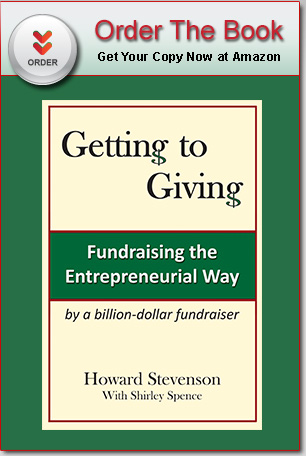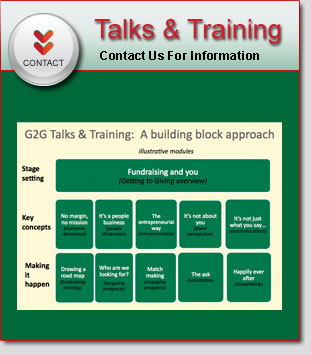I almost never do that, for two reasons. First, I don’t like it when people do that to me, especially early on. Second, as a fundraiser, you don’t know the donor’s situation. Read More



I almost never do that, for two reasons. First, I don’t like it when people do that to me, especially early on. Second, as a fundraiser, you don’t know the donor’s situation. Read More
Here are six ways that one donor and fundraiser (yes, Howard) thinks about wealth and the implications for getting to giving.
1. Wealth is an instrument of choice. People who are wealthy have lots of opportunities to give. Just because they’re rich doesn’t mean that they will give to you. How can you differentiate yourself from other causes, especially similar ones? Read More
There typically are three drivers of corporate giving: the CEO, HR and/or Marketing. Sometimes, it’s essentially individual giving; the CEO decides how much and who to give to. That is often critiqued by employees and snubbed gift recipients. As a fundraiser, getting access to and understanding the giving priorities of the CEO are the keys. Read More
To start, “no margin, no mission” applies to every organization. In fact, it was a nun in charge of a church-run hospital who introduced me to that truth. What is your economic model? Then, what do you stand for, why is it important, and who might be interested? Finally, don’t forget the bricks and mortar. Read More
Through my own board work, requests for advice from friends and colleagues, and the G2G community, I get to see a wide range of organizations. These are challenging times for most everyone, I must say. Here is my take on the top five issues facing fundraising leadership today. Read More
When it comes to raising significant gifts, you’re usually not talking about a day trip; you’re talking about a lengthy journey. You choose your travel companions, and plan your itinerary. Then, off you go!
To help you on your way, here’s a checklist summarizing the key steps involved: engage a prospect, make a proposal, formalize the gift, and nurture the relationship. Read More
At one level, the answer is Management 101. Leadership needs to pay attention to its economic model and cost structure. At another level, it’s a systemic problem. The sheer number of nonprofits – many quite small – breeds inefficiencies. Overhead is duplicated, and services overlap. Read More
I am a strong believer in raising children to feel a sense of responsibility to the community. That’s how I was raised, and that’s an attitude and behavior that I have tried to model for my children. It can start early, in small ways. Read More
The Fenn School, located in Concord MA, is a private, independent day school for boys in grades 4-9. In 2006, the Foundation for MetroWest brought its signature Youth in Philanthropy (YIP) program to the Fenn School. (Prior to that, it had been running a privately-funded giving program.) Read More
I will be doing some private fundraising for a tax supported charter school in a low income area. Do you have any suggestions as to our best approach to potential donors including foundations? The primary objective is to build a new neighborhood school, for which about $3M in private funds will be required.
I should start by saying that I don’t think foundations are a good target. Many don’t like capital projects because they don’t directly serve a nonprofit’s purpose. Read More